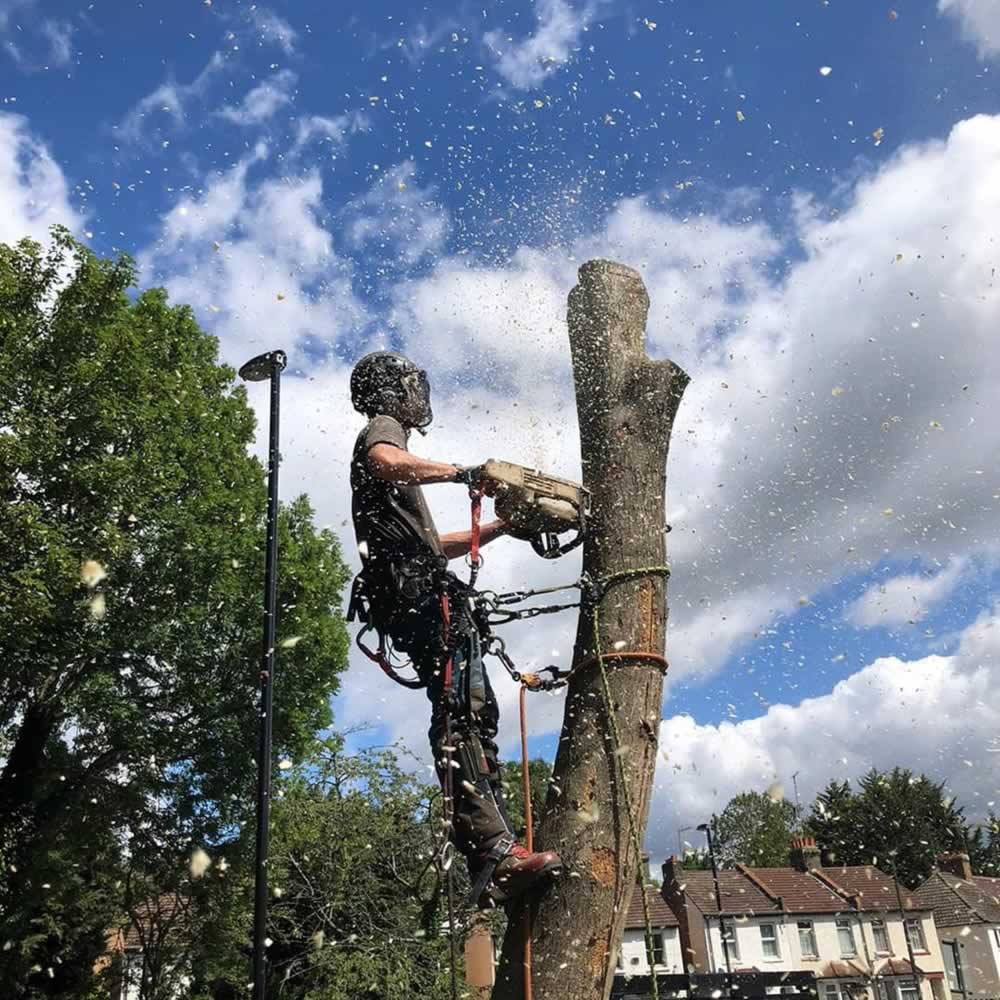Without the relevant qualifications and experience, tree surgery could be dangerous, time-consuming and inefficient. There are many ways in which tree surgeons help to minimise risk associated with felling or pruning trees, working at heights and using specialist machinery. We carry out all aspects of tree work,
working in accordance with British Standards 3998:2010.
Here are just a few of the ways in which tree surgeons help to ensure safety when they work:
Training
In order to become a tree surgeon, you undergo extensive training and acquire the necessary knowledge to carry out your work safely. Tree surgeons during training learn rigging and climbing techniques, equipment usage, pruning practices, safety protocols and more. Expertrees encourage an extensive progression programme for all their staff, through the completion of NPTC courses, to ensure that they are forerunners of the ever-changing UK legislation of the arboriculture industry, working in compliance with
the latest health and safety regulations. Some staff members, past and present may have joined through an apprenticeship scheme, working closely between the workplace and Merrist Wood Agricultural
College.
Safety Equipment
There is an array of safety equipment used by a tree surgeon which may include wearing harnesses, using ropes and carabiners. All of these items are essential to prevent falls and for every member of the team to feel secure working at height. The hiring of platforms, or MEWPS, is often required to carry out work on dangerous, dead trees, where the safety of staff and the public is paramount.
Personal Protective Equipment
Tree surgeons may protect themselves from danger by wearing personal protective equipment such as as high-vis clothing, hard helmets, eye protection, ear protection or chainsaw-safe trousers, gloves or boots.
Risk Assessment
Prior to completing your tree felling, tree pruning, crown thinning or other jobs, we will visit your project to carry out a comprehensive risk assessment. Potential hazards may be identified such as uneven terrain, power lines, unstable trees and more. The project plan always ensures the safety of every tree surgeon. more. The project plan, which is checked again prior to works commencing on site, ensures the safety of the tree surgery team and members of the public.
Equipment Maintenance
Tree Surgeons possess a wide array of equipment and machinery to carry out their job safely and effectively. These assets are maintained and inspected regularly which is vital to ensure their safety. Their tools are also checked and serviced to ensure that they are not only performing optimally, but also at the highest levels of safety which reduces the risk of accidents taking place. Expertrees achieving affiliation with the Arb Association , a world-leading authority for over 50 years on arboriculture best practice, ensures that a rigorous system of regular daily checks of all equipment is carried out by all members of staff, in addition to external periodic LOLER rigging inspections, vehicle checks, ladders, to name but a few, in addition to the annual Arb Association inspections.
Communication and Teamwork
Before a tree project takes place, all tree surgeons are briefed on the plan, potential hazards and safety procedures in question. Regular communication throughout the task also ensures that the team is coordinated and safe, allowing for an emergency response if needed.
Ongoing Education
Tree Surgeons stay up to date with best practice related to trees through continuing education and professional development. Thie ensures that they are aware of advancements within the industry and the latest arborist techniques which might help to get your job done more quickly, more safely or more efficiently.
When looking for a tree surgeon, consider the points above to ensure that the company you choose for your job is adhering to safety protocols, is knowledgeable, experienced and providing a safe working environment for everyone concerned.

